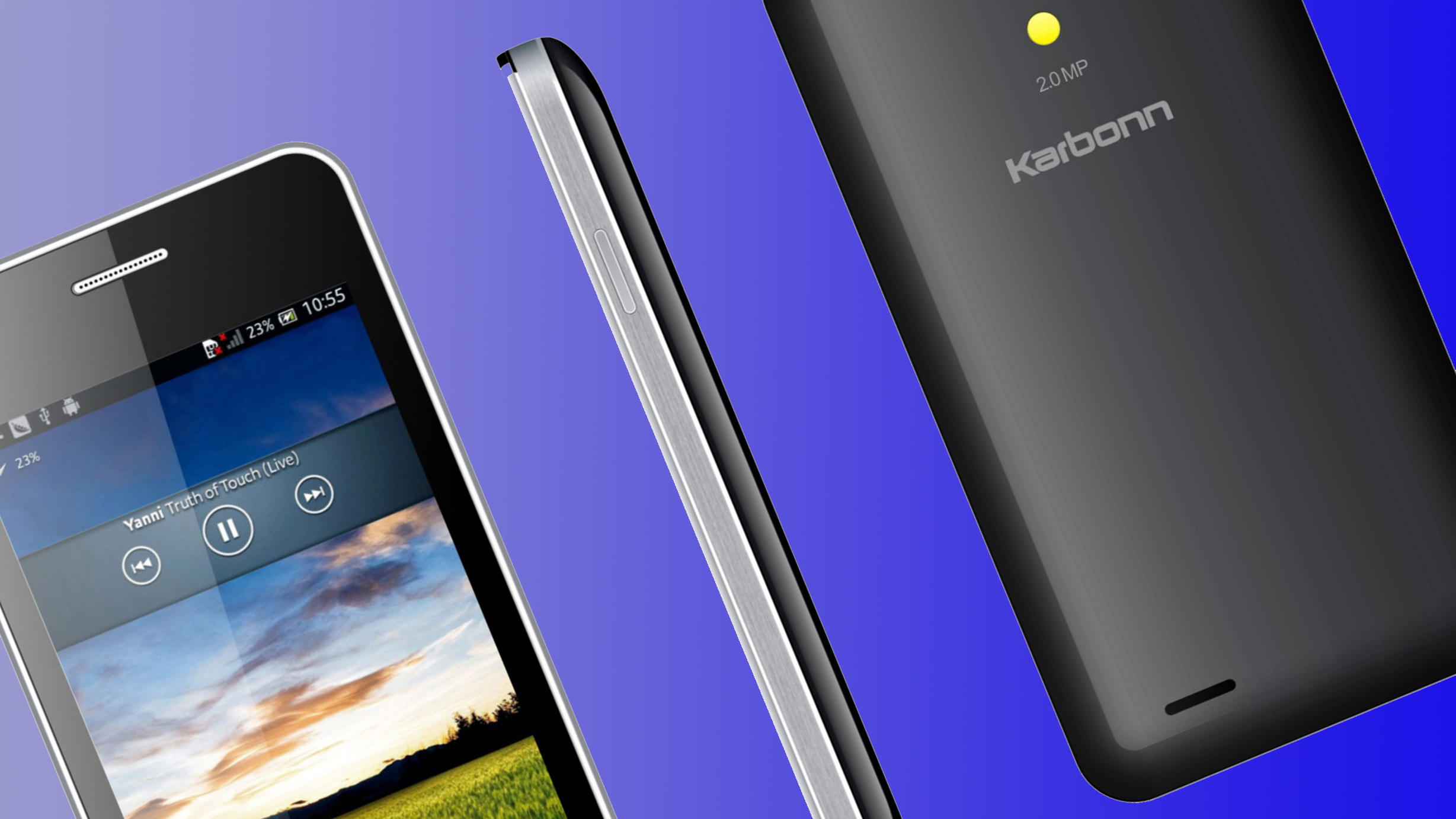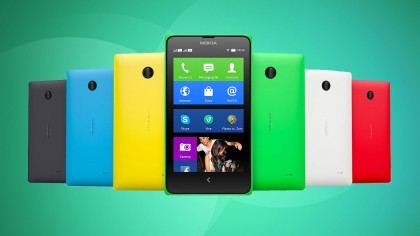How on Earth can you make a smartphone for £26?
Simple answer: don't expect it to be brilliant

Recently launched in India by low-cost manufacturer Karbonn, the Smart A50S looks like a modest smartphone that's unlikely to tear you aways from the Apples and Samsungs of the world. But it has one fantastic USP: it's on sale for just Rs. 2699 (around £26).
Its availability online in the UK has quickly led to outrage at the fact we're forced to spend over £500 for a handset from Apple, Samsung, Sony or HTC – so are we being overcharged?
While a millisecond's thought will bring you to the obvious conclusion that this phone is clearly not packing many of the top level features the iPhone 5S and Galaxy S5 are running, the fact is you can still own 20 Karbonn A50S for the same price as one top-level phone.
- Best cheap smartphone: what to buy on a budget
So how is it being done – and are other countries about to see a flood of phones that cost less than the price of an official iPhone cover?
Cheap frenzy
Before we get into the mechanics of this low- low- low-cost phone, it's important to realise why it's being made.
In India, where Karbonn does a lot of its phone sales (alongside other places like Bangladesh, Nepal and Sri Lanka) the company holds about 10% of the market share, making it the third biggest OEM, according to research firm IDC.
In the last two years, the appetite for smartphones has exploded, growing 181% year on year in the last part of 2013 alone, while demand for the cheaper feature phone has begun to stall.
Sign up for breaking news, reviews, opinion, top tech deals, and more.
This has led to a race to the bottom for manufacturers, eager to grab as big a slice of the smartphone pie as possible with so many potential customers out there.
Samsung actually holds the market lead in India, with over a third of the market thanks to lower-cost phones like the Galaxy Star, so price is one of the key ways for manufacturers to compete. Nokia tried that with the cheap Nokia X, but Karbonn's effort is half that price again.
It's what's inside that counts
As you can imagine, the Karbonn A50S manages to hit that low price tag by packing the phone with the kinds of specs that would make any high-end smartphone fan weep.

Where they might be used to salivating over 1080p screens with octa-core processors, massive displays, 50MP+ camera and oodles of internal memory, those picking up Karbonn's cheap offering have to make do with a somewhat different spec sheet.
The display is a small 3.5-inch affair with the kind of resolution that most touchscreen phones were using over five years ago at 480x320.
It's got a Mediatek dual-core 1.2GHz processor, only 256MB of RAM and just 512MB of internal storage. A 2MP camera is acceptable (although with only 256K colours on board, the pics you take will look akin to those from around 2005).
And from there it's a hit list of things you'd expect to see even in most budget phones nowadays, the big one being that it's not even got 3G connectivity. It's also devoid of: a compass, light sensor, barometer and NFC, which means the cost is lowered and the spec sheet cleaner.
But while most would expect this phone to be devoid of any useful features, it does still have a front facing camera (Nokia's cheapest Windows Phones can't manage that), the space for a 32GB memory card (and reportedly 2GB of extra internal storage too) plus Wi-Fi, Bluetooth, a dual-SIM slot and an FM radio.
On top of that, you've got the licenses needed to be able to make an Android phone. The Register points out that without 3G, the need to pay Qualcomm a license is removed, and other workarounds will have likely been found to avoid the extra cost of launching a phone powered by Google's OS.
However, it's certain that Karbonn will be paying Microsoft a few dollars, as must all Android phone manufacturers, after the brand struck a deal to create a Windows Phone in the future.
£30 phones: the future?
Does all this mean that other smartphones markets will be flooded by low cost phones? It's unlikely, and that's a good thing. In developing nations smartphones are the first opportunity to get access to a number of services through apps, and are often a family's first mobile phone at all. As such, the less impressive spec sheet is offset by the new functionality now possible.
However, the experience on a phone like the Karbonn A50S is very unlikely to be impressive. With a low-cost CPU, barely any RAM and a tiny amount of internal storage, even the fact it's running Android 4.2 is going to make the small-screened handset easy to use.
If these phones were to enter more established markets, they could lure in those looking to upgrade from that old Nokia phone they've been using for a decade, and the experience could put them off smartphones altogether.
However, the fact that companies are dialling down the price of the smartphone to such an extend is good news for consumers in general.
It means the price of smartphone components is fast eroding, and will either lead to much cheaper high-end handsets (as seen with the Nexus 5 or OnePlus One) or force manufacturers to up their game in terms of design, innovation and general ease of use, to keep encouraging us to part with our cash every two years.
So while you can import the Karbonn A50S, it's probably best not to if you want a strong smartphone experience when you're out of the house – but the amount you'll have to pay to get a good phone in the future is going to keep falling.

Gareth has been part of the consumer technology world in a career spanning three decades. He started life as a staff writer on the fledgling TechRadar, and has grew with the site (primarily as phones, tablets and wearables editor) until becoming Global Editor in Chief in 2018. Gareth has written over 4,000 articles for TechRadar, has contributed expert insight to a number of other publications, chaired panels on zeitgeist technologies, presented at the Gadget Show Live as well as representing the brand on TV and radio for multiple channels including Sky, BBC, ITV and Al-Jazeera. Passionate about fitness, he can bore anyone rigid about stress management, sleep tracking, heart rate variance as well as bemoaning something about the latest iPhone, Galaxy or OLED TV.